The “Courtyard” series by Dong Shaw-Hwei presents a delightful breakthrough of the artist’s painting style resultant from years of nurtured skills in [what Michael Polanyi has called] the “tacit knowing”. What makes Dong stand out among her fellow Taiwanese artists is that whereas (pretentious) vulgarity, (self-indulgent) narrow-mindedness, (eccentric) perversity, and triteness in their crafts oftentimes prevail in the cultural circle of Taiwan(as well as in contemporary art circles ), Dong is not affected because of her original and vital creativity. Thus, the artist is able to blend her genuine feeling and penetrating insight without pretentiousness. In this case the artist’s deployment of the resources of the impressionist school has led to a “creative transformation” of traditional Chinese cultural elements.

畫家舊居老院子實景 董小蕙 攝 2008
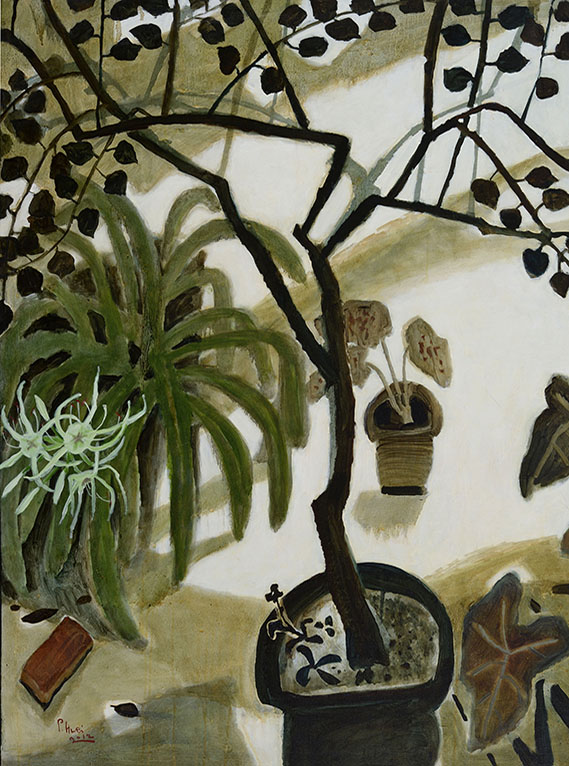
Trees and Shade I (2 canvas) 97 × 130 cm (60F) Oil on Canvas 2012

Trees and Shade II (2 canvas) 97 × 130 cm (60F) Oil on Canvas 2012
My own research about international artists from Asia has taken me to Taiwan three or four times over the past twelve years. I have visited Dong Shaw-hwei’s Taipei studio several times throughout this period and seen first hand her development of this series. In this culminating exhibition, we can see the classical ambition of Dong Shaw-hwei’s project: to create an aesthetic garden for the contemplation of nature. Dong Shaw-hwei’s paintings of her walled garden thus become an icon of Chinese traditional culture in a contemporary, international context. …These works are also informed by ancient Taoist philosophy and the artist’s strongly felt direct experience of her personal garden, thus operating in relation to the five millennia aesthetic history of gardens in China.
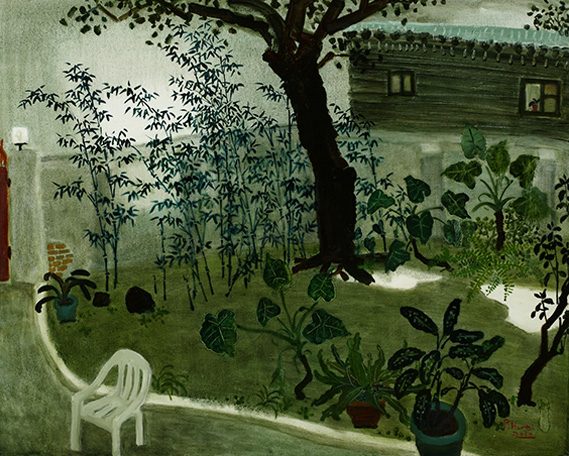
Dewy Sunshine in Courtyard 80 × 100 cm Oil on Canvas 2010
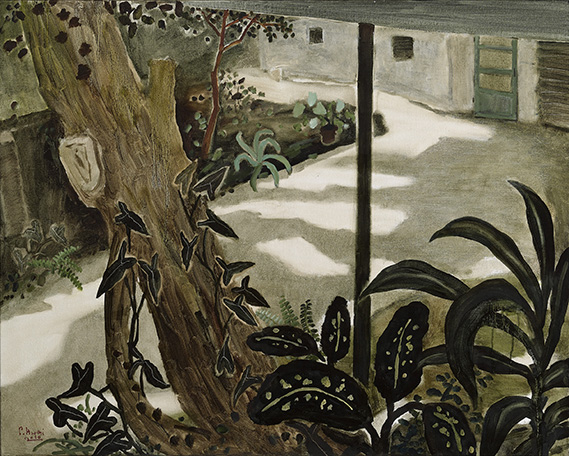
Old Tree in Courtyard 80 × 100 cm Oil on Canvas 2010

Afternoon Shine in Crisp Autumn 80 × 100 cm Oil on Canvas 2009
It is my belief that since Dong Shaw-hwei has already established a system of mature and comprehensive visual vocabularies, which sets up common grounds of cultural exchange based on mutual understanding and accommodation, Western audience will easily embrace Tung’s works and hold them with high regards. They can readily comprehend the meaning of her artwork: encompassing modern composition and aesthetics, her works present a certain harmonious relationship between humanity and nature. Such kind of simple serenity, as the very base of one’s daily life, is the essence of Eastern art, which is completely different from the pursuit of flamboyant sublimity and fantastic spectacularity in Western art in terms of artistic creation. Hence I am certain that when it comes to seeking commonalities while accommodating differences between Chinese and Western art, Shaw-hwei will no doubt hold a significant place in art history.

Beneath the Tree 65 × 80 cm (25F) oil on Canvas 2010
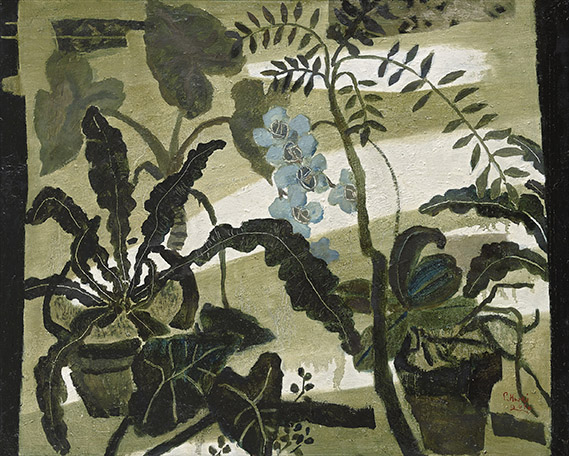
Among the Flowers Shade 80 × 100 cm (40F) Oil on Canvas 2010
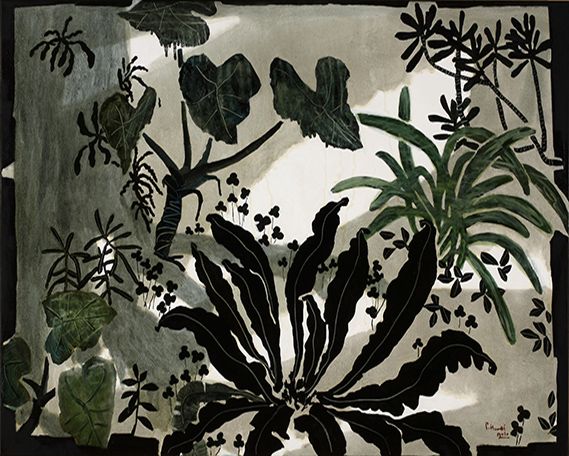
The Great Tree IV 97 × 130 cm (60F) Oil on Canvas 2010
「畫家『濃蔭風格』諸系列造形錯落但有致,變化中有統一,繁複中取統調,頗有『鬧中取靜』意味。奇妙地,陰影的虛與枝葉的實交相組合而成,我們所熟悉的現代構成式的幾何背景竟然是在這樣的非西方視野下產生,而是在她的視覺冥思主導中,有了另類精采的演繹。心眼境界一旦不同,表現也跟進,而從觀念到實踐的轉折過程,對創作者而言才是最具挑戰的;而對觀者而言,這種蛻變也最是讓人回味的。總之,她是『靜觀佳興、形外變態』的見證者與實踐者,而場域是極為普通的老庭園,凸顯平凡中見真章的可能。」

Dense Growth in the Courtyard 38 × 54 cm Watercolor on Paper 2009
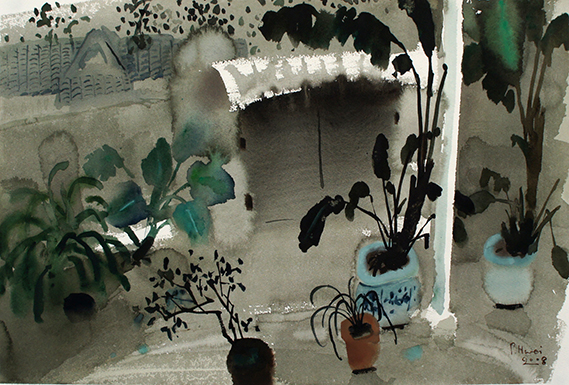
The Quiet Peace in Courtyard 38 × 54 cm Watercolor on Paper 2008
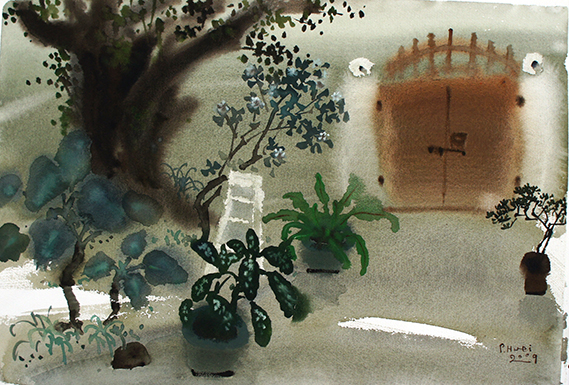
董小蕙〈老院-門前〉 38 × 54 cm Watercolor on Paper 2009
「董小蕙那些撒落著光線的老院子一角,灑落的越來越不是自然的光線,而是『內在光線』,特別當老院子已經不復存在,這些角落成為畫家靈魂藏匿與蜷縮的所在,那裡是老院子的萌芽之處,瀰漫著法國哲學家巴舍拉(G. Bachelard, 1884-1962)所說的靜定感(immobilité)。如果2004年時畫家的焦慮表現在她與老院子大限之期的賽跑,以及不斷的想捕捉與描繪韶光的流逝,則2010年之後老院子已經成為靜定與孤寂的表徵:『縮身回角落,無疑是種簡陋的表達方式。但若說它貧乏,也必定是由於它擁有無數的意象。……意象越樸拙,夢想反而更加廣裘。』」

Flowers Dialogue IV - the Golden Lycoris 80 × 100 cm oil on Canvas 2016
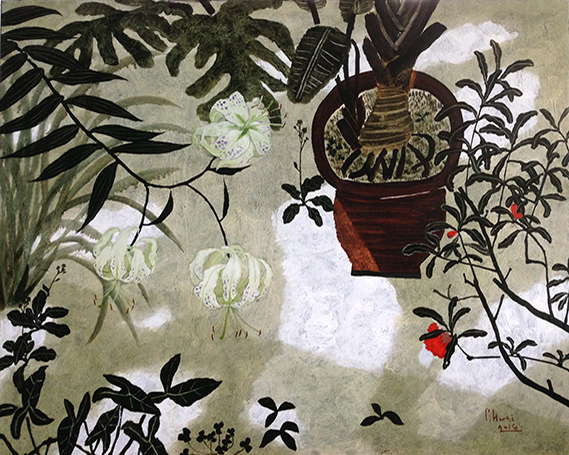
Flowers Dialogue VI - Lilium speciosum 80 × 100 cm (40F) oil on Canvas 2016
「董小蕙的畫最具特色的是她的『老院子』系列,描述的物件是畫家在臺北居住的一處老房,她以一位詩人充滿平靜、清澈而又熱情的內在情調,向人們訴說著老院子的一切。黑桌系列、黑白系列、平塗系列、抽象系列……,畫家以靜謐、婉約、自在、深邃的審美之心和不同藝術語彙去追憶一段記憶,去守護一份優雅與清逸。在小蕙的筆下,老院子的一切都是那麼美好,片石多致,寸草生情。她甚至把平常的野花奇草插入瓶中,也變成一片天地,透出這些細小生命,我們看到了濃縮的生命與幽邃的意蘊,想到了女主人當年欹枕卷畫簾,烹茶理綠綺的美景。小蕙能把老院作為永恆的主題不斷的畫下去,不僅是畫家對所隱小家的眷戀,而成為了一代人共通的文化心理結構。看似平淡的形式結構包容著無窮的意味、真趣、自我與大自然的真實生命。」
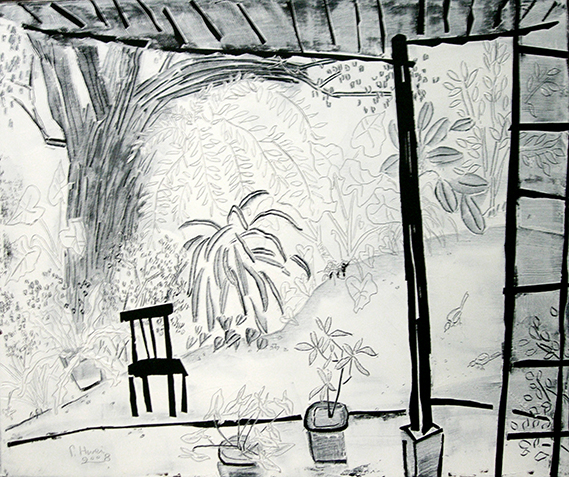
Living in Courtyard 65 × 53 cm (15F) Oil on Canvas 2008
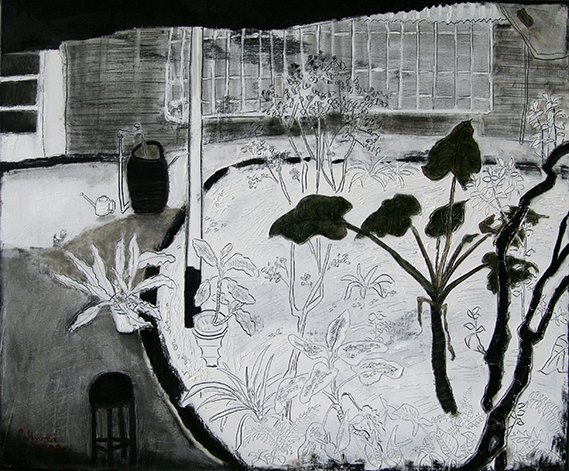
Shine in the Afternoon 60.5 × 72.5 cm (20F) Oil on Canvas 2009

Shine in the Afternoon 60.5 × 72.5 cm (20F) Oil on Canvas 2009
「董小蕙的藝術道途,踽踽獨行,悠遊心海,因此,她的畫作,如無聲之語,娓娓傾訴,明澈淨心……以彩筆為鋤,以畫布為田,30年來,董小蕙無忮無求的勤耕藝田。晨昏日月,晴雨風露,寫一幅畫,悟一次道;室內的桌椅靜物,屋外的 院落花樹,書中的文情哲理,心底的異思遐想,都如源泉活水灌溉著創作的靈魂。董小蕙日復一日,似修行者般在無垠無涯的藝術天地中涓滴成河,用畫筆留下了一幅幅對自然生機的禮讚,對歷史憶往的珍惜,對生命刻痕的紀錄。」〈含英咀華.平淡天真〉